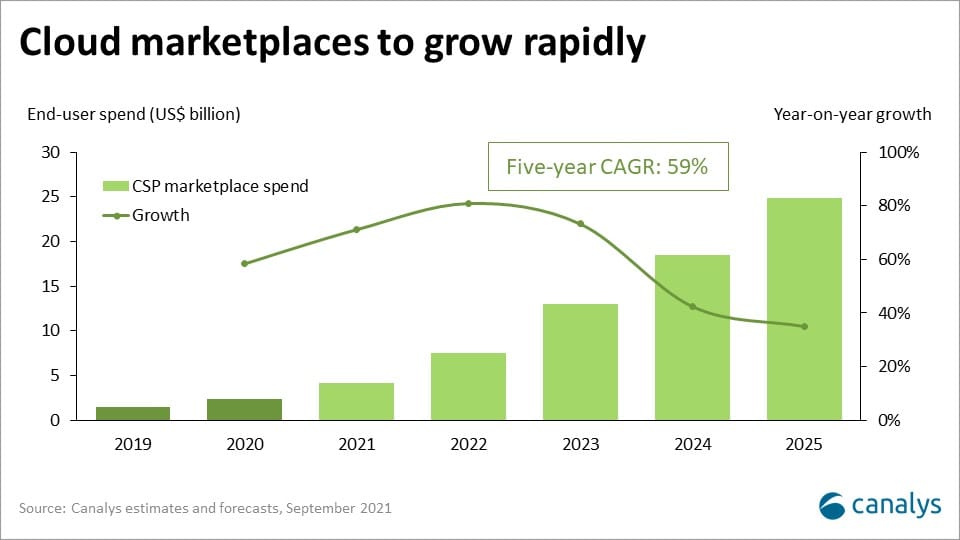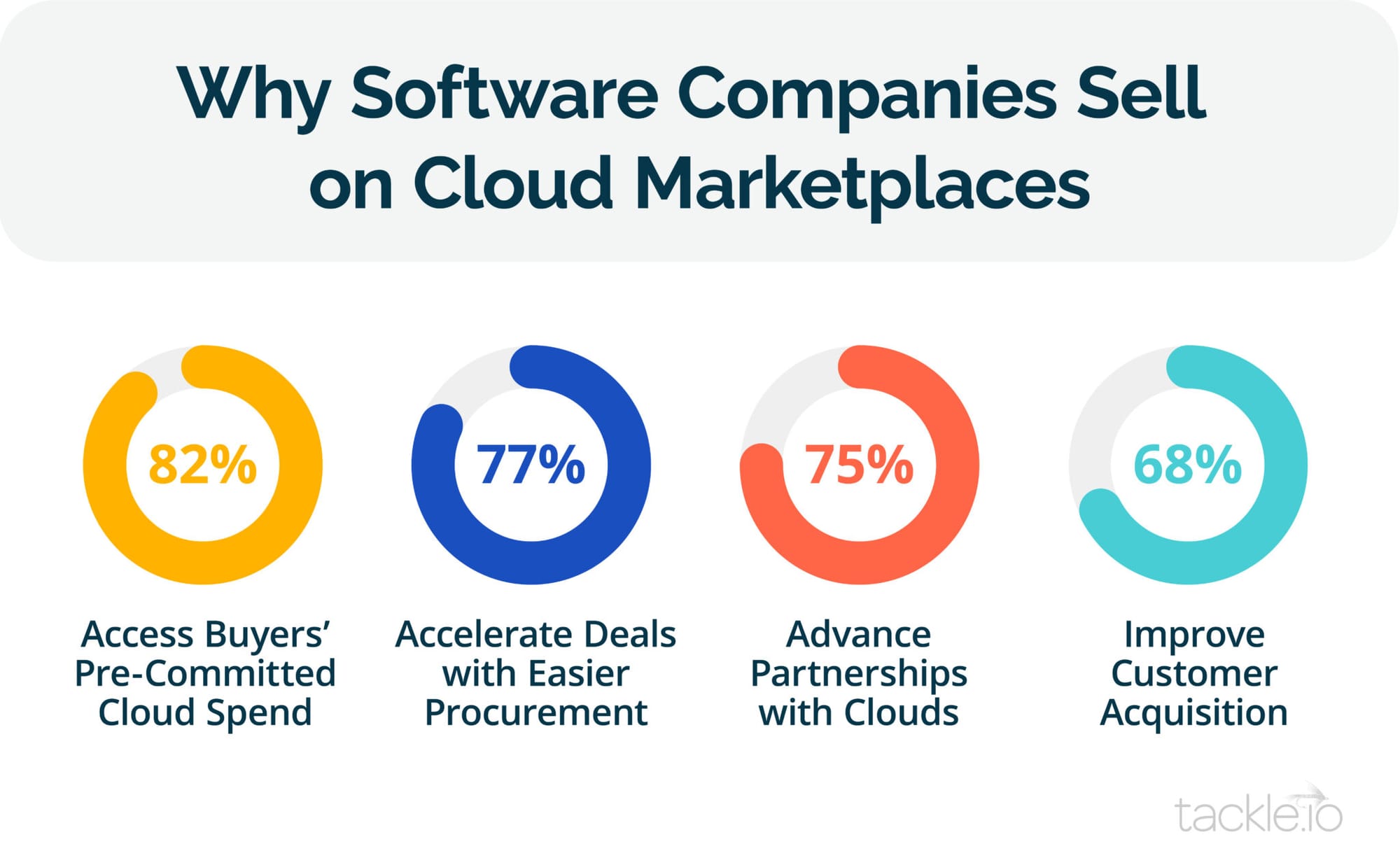Cloud Marketplaces Introduction

Welcome to the digital era, where the cloud reigns supreme, offering businesses unparalleled flexibility, scalability, and efficiency. In this landscape, cloud marketplaces have emerged as pivotal hubs, revolutionizing how software and services are bought, sold, and deployed. For partners in the tech ecosystem, understanding and leveraging these platforms is no longer an option—it's a necessity for growth and success.
What Are Cloud Marketplaces?
Cloud marketplaces serve as centralized platforms where customers can discover, purchase, and manage a variety of cloud-based products and services from multiple vendors. These marketplaces are hosted by leading cloud providers such as Amazon Web Services (AWS), Microsoft Azure, Oracle and Google Cloud Platform (GCP), as well as other specialized platforms like Salesforce AppExchange and IBM Cloud Marketplace.
Why They Are Important
The significance of cloud marketplaces cannot be overstated. They simplify the procurement process for customers by offering a one-stop shop for all their cloud needs. Additionally, they provide partners with access to a vast audience of potential buyers, enabling them to reach new markets and drive revenue growth. By leveraging the infrastructure and resources of cloud providers, partners can focus on delivering innovative solutions rather than worrying about the complexities of deployment and maintenance.

What Benefits They Have for Customers
Cloud marketplaces offer customers a myriad of benefits, including:
- Simplified Procurement: Customers can browse through a diverse catalog of products and services, compare offerings, and make purchases with ease, eliminating the need for lengthy procurement cycles.
- Flexibility and Scalability: With cloud-based solutions, customers have the flexibility to scale their usage up or down based on evolving business needs, ensuring they only pay for what they use.
- Centralized Management: Cloud marketplaces provide customers with a unified dashboard to manage their subscriptions, monitor usage, and track spending across multiple vendors, simplifying administration and reducing overhead.

What Are the Top 3 Cloud Marketplaces?
While there are numerous cloud marketplaces in existence, three stand out as leaders in the industry:
- AWS Marketplace: As the largest cloud marketplace, AWS Marketplace offers a vast selection of software and services across various categories, including analytics, security, and machine learning.
- Microsoft Azure Marketplace: With seamless integration with the Azure ecosystem, Microsoft Azure Marketplace provides customers with access to a wide range of solutions optimized for the Azure platform.
- Google Cloud Marketplace: Google Cloud Marketplace empowers customers to discover, deploy, and manage a diverse array of solutions built on Google Cloud, including AI and machine learning tools, data analytics platforms, and more.
How Big Are These Marketplaces?
The size and scale of cloud marketplaces continue to grow exponentially, fueled by the increasing demand for cloud services. According to recent data:
- AWS Marketplace boasts over 8,000 listings from over 1,600 independent software vendors (ISVs), with over 250,000 active customers worldwide.
- Microsoft Azure Marketplace features over 8,000 listings across various categories, serving millions of active users globally.
- Google Cloud Marketplace offers thousands of solutions from leading providers, catering to the needs of enterprises of all sizes across diverse industries.

How to Successfully Sell via These Marketplaces
Selling via cloud marketplaces with hyperscalers (like AWS, Azure, and Google Cloud) requires a strategic approach to ensure success. Here are six key factors to focus on:
- Deep Integration with the Hyperscaler’s Ecosystem
Successful selling involves tightly integrating your product with the hyperscaler's services, APIs, and architecture. This enables seamless deployment and helps position your solution as complementary to the hyperscaler's existing offerings. - Co-Sell Alignment and Partnership Programs
Hyperscalers often have dedicated co-sell programs where their sales teams collaborate with third-party vendors. Align your sales strategy with the hyperscaler's go-to-market initiatives to gain visibility, tap into their sales resources, and leverage their customer relationships. - Optimize Marketplace Listings for Searchability
Ensure your product is easily discoverable in the cloud marketplace by optimizing listings with relevant keywords, clear value propositions, and customer testimonials. Also, keep listings updated with new features and integrations. - Pricing and Consumption Models
Offer pricing models that are flexible and scalable, aligning with the consumption-based billing of the cloud platform. Consider offering pay-as-you-go, subscription, or even free trials to entice enterprise customers. - Go-to-Market Strategy with Clear Differentiation
Clearly articulate what sets your solution apart from native cloud services and other third-party products. Ensure your go-to-market strategy highlights the unique benefits, use cases, and value you deliver to enterprise customers. - Build a Joint Marketing and Enablement Plan
Collaborating with the hyperscaler on joint marketing activities, such as webinars, case studies, or customer success stories, helps boost visibility. Additionally, invest in training both your sales teams and the hyperscaler's on how to sell your solution effectively.
Success in these marketplaces is often a result of close collaboration, ecosystem alignment, and offering real value to cloud customers.
Conclusion
In conclusion, cloud marketplaces represent a game-changing opportunity for ISV partners in the tech ecosystem to expand their reach, drive revenue growth, and deliver value to customers. By understanding the intricacies of these platforms and implementing effective sales strategies, partners can unlock their full potential and thrive in the digital economy. Embrace the power of cloud marketplaces and embark on a journey towards partner sales success.
“The hardest problem with software is distribution. App developers often spend more on distribution than they earn back.” — Google
If you enjoyed this piece, please share it. Thanks. 🙏




